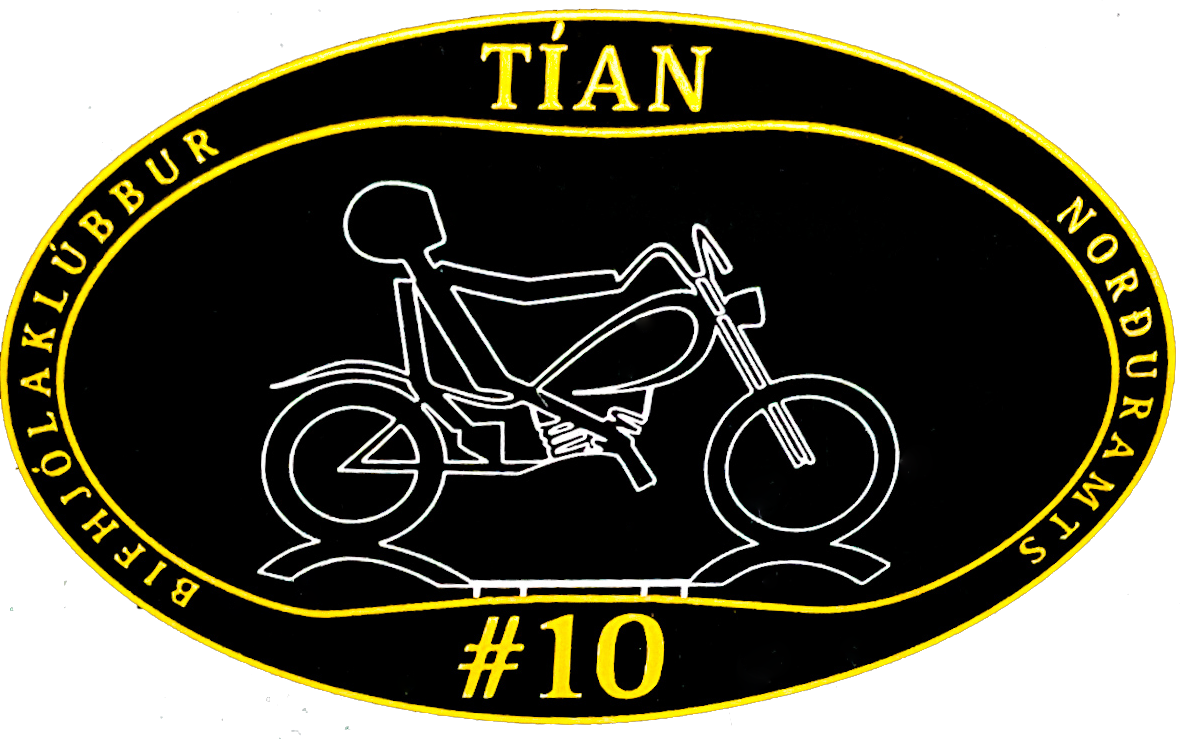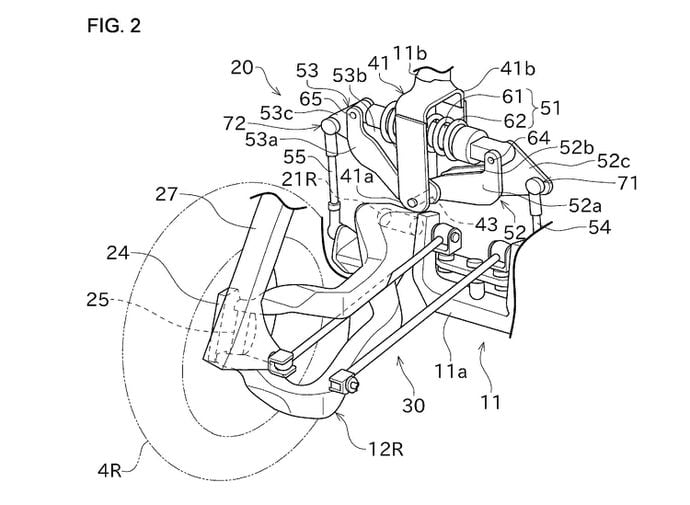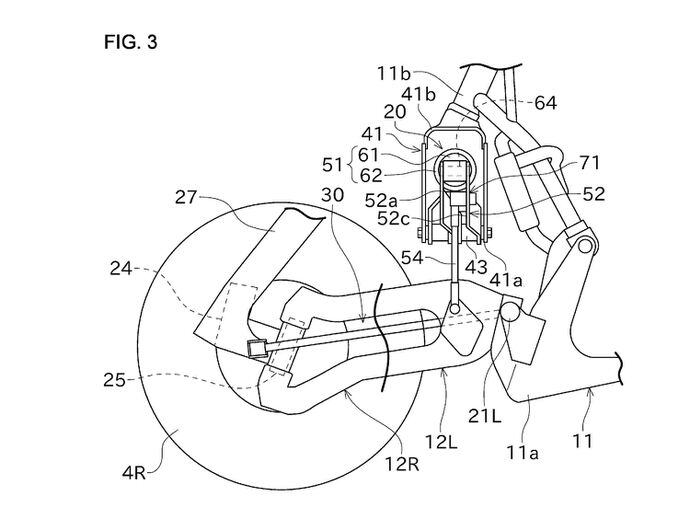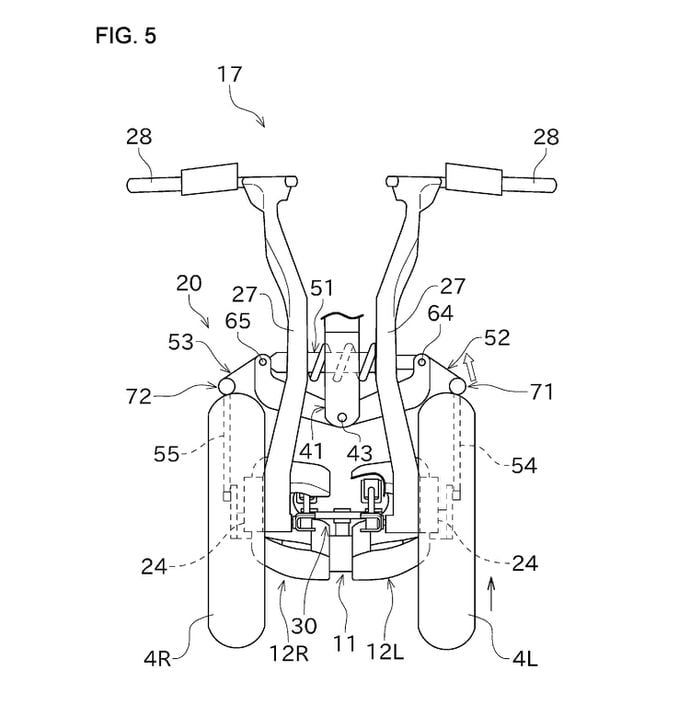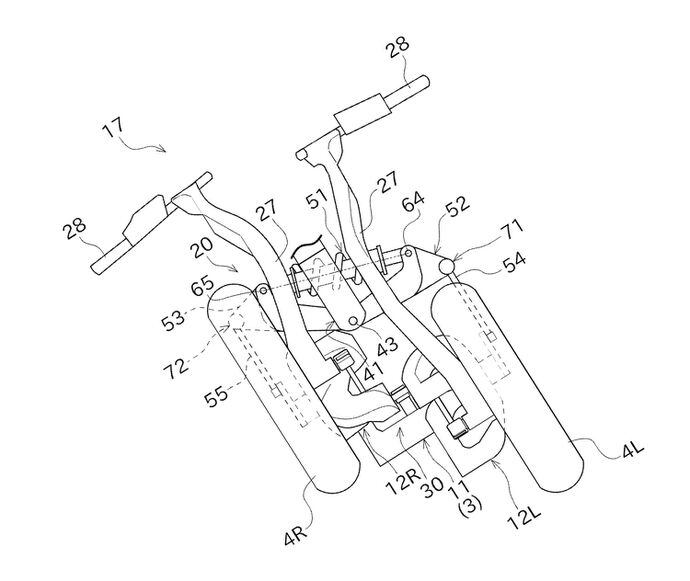Þriggja hjóla ofurhjól með nýrri gerð af stýri.
Fjöðrun og stýri og allt af öðrum toga en við erum vön.
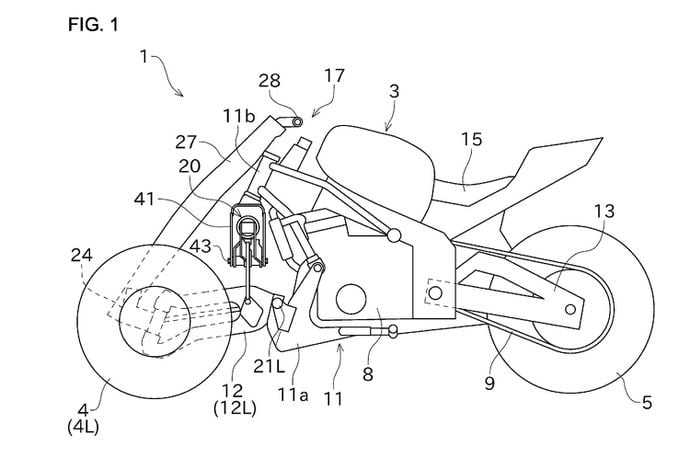
Nú eru um átta ár frá því að Kawasaki sýndi hið frumlega J frumtýpu framtíðarinnar á Tokyo motor show 2013, en ný einkaleyfi sem fyrirtækið er kominð með sýna að hjólið er enn að þróast.
Teikningar af nýja búnaðinum hafa lekið út og er margt þarna mjög forvitnelgt og öðruvísi og þar á meðal tvöfaldi framgaffallinn með stýri sem fylgir hvorum gaffli fyrir sig er hjólinu er hallað í beyjum.
ADVERTISEMENT
Although we’ve seen designs for tilting trikes with front swingarms in the past, including other patents from Kawasaki, this is the first to adopt the same steering system that appeared on the Concept J. Instead of a complex linkage to connect the bars to the front wheels, the design uses rigid struts to attach each bar directly to one of the front wheel’s uprights. As well as ensuring a direct connection to transmit movements and feedback between the front wheels and the rider’s hands, the system means that as you lean into a corner, the hand nearer the apex will rise as the one on the outside of the turn moves down. The wheels themselves are connected via steering rods attached to a pivoting link, so they will turn in harmony despite the bars moving up and down independently of one another. On the downside, there doesn’t appear to be anything to isolate the bars from vibrations and jolts from bumps on the road surface.
Related Content: Kawasaki Simplifies Tilting Trike With New Patent
Although not present on Kawasaki’s patent, the similar steering and suspension system that appeared on the Concept J demonstrated another possible advantage from its layout. The 2013 concept bike included the ability to alter the distance between the front wheels—spreading them further apart in some circumstance to add more stability—and allowed the struts connecting the bars to the wheels to change angle, altering the riding position from sit-up to near-prone depending on the bike’s mode.
ADVERTISEMENT
The patent leaves plenty of questions, but it also adds to a growing bank of evidence that Kawasaki is keen to develop a leaning three-wheeler. The firm has designed several such machines now, all revealed in patents, and most share the common theme of being higher-performance models than those developed by its rivals. The last time we saw Kawasaki following an idea with such dedication was in five years’ worth of patents for supercharged bikes that emerged before the Ninja H2 was officially confirmed. Could the three-wheel superbike be Kawasaki’s next game-changing development? Don’t bet against it.
